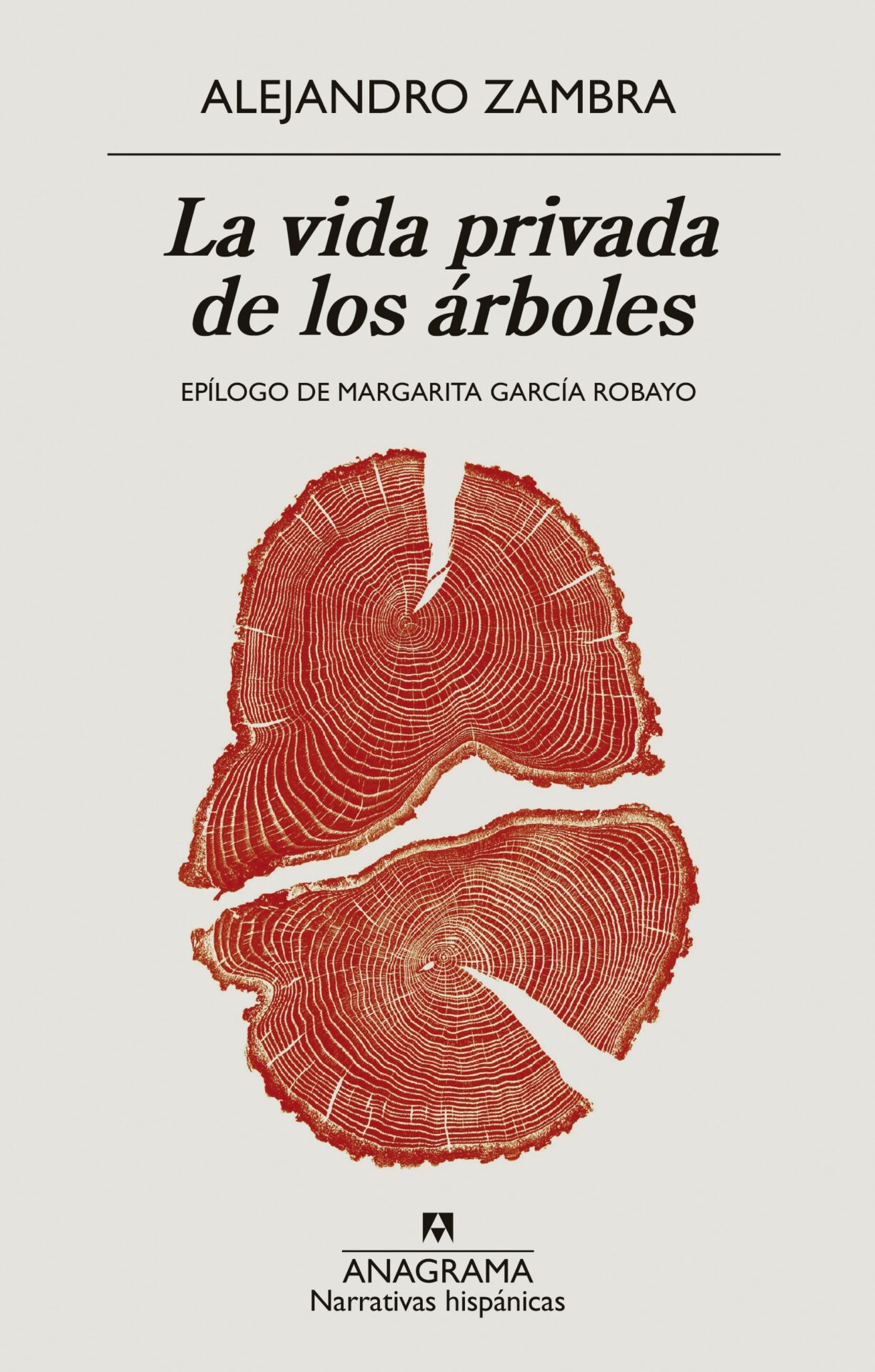Editor’s Note: The following text is the epilogue to the recent new edition of La vida privada de los árboles, previously translated to English by Megan McDowell as The Private Lives of Trees, published in 2022 by Anagrama. We are grateful to the press for allowing us to include this text in bilingual edition in this issue’s feature on the work of Alejandro Zambra.

Back when I didn’t yet write, but I wanted to be a writer, the idea of sitting down and making up stories struck me as forced. I read a lot, of course, like someone who eavesdrops on a great conversation because they know they couldn’t get a word in. I read and I passed judgment: “That’s not writing, that’s mastering a proper technique of putting sentences together.” I wasn’t quite sure what “writing” meant, but I was sure, as efficiently as a story might be told, there had to be something beyond the writing itself—something you could only get to, still, by writing.
I had trouble finding, in my reading, examples of how to tell a story without saying everything. I surmised that, in the midst of stories, there must be clouded areas where the stuff that matters happens, while the narrator is busy telling us about stuff that doesn’t matter. I read and I thought, “It’s hard to believe in a narrator who thinks what they’re saying matters.”
There are two kinds of books, for me: those about which you can answer—confidently, unequivocally, precisely—the question “What’s it about?” and those about which you can’t. The latter group—my favorites—tend to yield sputtering, awkward, incomplete answers, ultimately concluding (assuming) that no answer can be given at all, since there is neither one single answer nor a thousand, since the book is about too many things—all the things—which is the same as saying the book is about nothing. Perhaps this is why the books in the latter group tend to spark such ambivalent reactions. The storytellers I like most contain two opposing qualities: brevity and profundity, simplicity and complexity, sensitivity and frivolity, darkness and light. Such a storyteller can lead the reader to realize that what is being told represents just one narrow line of a contour. We follow this line and submit because, in the best case scenario, it is a beautiful and pleasant line. We follow this line knowing the true story lies beneath, at boiling point, contained.
The first time I read The Private Lives of Trees, I placed it among the books about which you can’t answer the question “What’s it about?”. But I realized almost immediately that this book surpasses—or topples—the standards of this category—and of any other—because, after finishing it, nobody would even think to ask this question. The question doesn’t follow, the question doesn’t matter. When we get into this book, we find more essential, more primal questions—questions that preempt what sense it would make, in other cases, to puzzle out clichés and plot lines.
For starters, The Private Lives of Trees is a book that does not exist and that will not exist in the hypothetical future the novel presents. I guess you’d call it a novel, too, for lack of a better word; because its format slips past all the words we have in our language to name a book.
The book is one big conjecture pregnant with conjectures.
There’s a protagonist who doesn’t know what’s going on, and who therefore develops hypotheses: on his wife’s absence, on his stepdaughter’s future, on his past, on a particular night of his childhood, on his ex-wife and her mother (who might also be nobody’s mother), on the book he is not writing that his stepdaughter will not read—or will she?—when she grows up, on trees chatting in the park, on his true calling: “His true calling is to add voices. […] His true calling is to create words and forget them amid the noise.” The protagonist weaves thoughts together and picks them apart because he wants this night to drag on indefinitely; so he “arranges the facts willfully, with love, in a way that keeps the future safe from the present.”
One of the things that most blows me away about this book is how it puts forward the drastic fantasy of a future lacking a present. A future uprooted. And maybe for this reason (being situated in the future, which is like being situated in conjecture) it is also a book about waiting. It could have been called The Book of Waiting, which is in no way a better title than The Private Lives of Trees, but is better than The Book of Conjectures. Waiting is deep with meaning; while we wait, things are happening that remain in the shadows until a burst of doubt lights them up. While we wait, the novel is taking place, making clear from the start that it will only end when one of the two conditions set forth by the narrator has been fulfilled. In other words, the reader is kept wrapt not by the story’s progression, but rather by—among other things—the pleasure of bearing witness to an irremediable fate. We don’t know what’s going to happen, but we know it’s irremediable.
What I like most, though, about this gargantuan little book is how it represents what’s happening while its characters talk or wait or sleep or stay up. Its representation of all that which is neither told nor shown nor explained is so masterful that, of course, it is not made of words. What the words tell is a rigorous synthesis of the emotional lives of the characters, but once this synthesis gets into the reader’s head, it expands and takes on an unsuspected constitution. The book is an input device for a robust representation of life. Like when you look at one of those 3-D artworks and the flat images take on volume, this book presents a narrow, succinct plotline, behind which we can visualize ramifications, dense like a mirage of forests.
The first time I read The Private Lives of Trees was the first time I read Alejandro Zambra. It didn’t take me long to read all the rest. It would be inaccurate—and inadequate—to say I admire his work; what I feel is not admiration but gratitude. I am especially grateful to this book because, in my case, it granted access to his world of fine contours and infinite depths. In The Private Lives of Trees, I found proof of what I suspected writing could offer us beyond writing itself. I read and I thought, “Alejandro Zambra has perfectly mastered the technique of putting sentences together.” Or, “Alejandro Zambra invests ingots of ingenuity in concision and profundity—my two favorite virtues.” But these qualities, while undeniable, were not what moved me. There was something more, there was a discovery: I had finally found a writer who writes in order to get to that place that is not made of words. And who takes you with him. I know of no greater talent, in literature or in life.
Translated by Arthur Malcolm Dixon
From La vida privada de los árboles (Anagrama, 2022)



